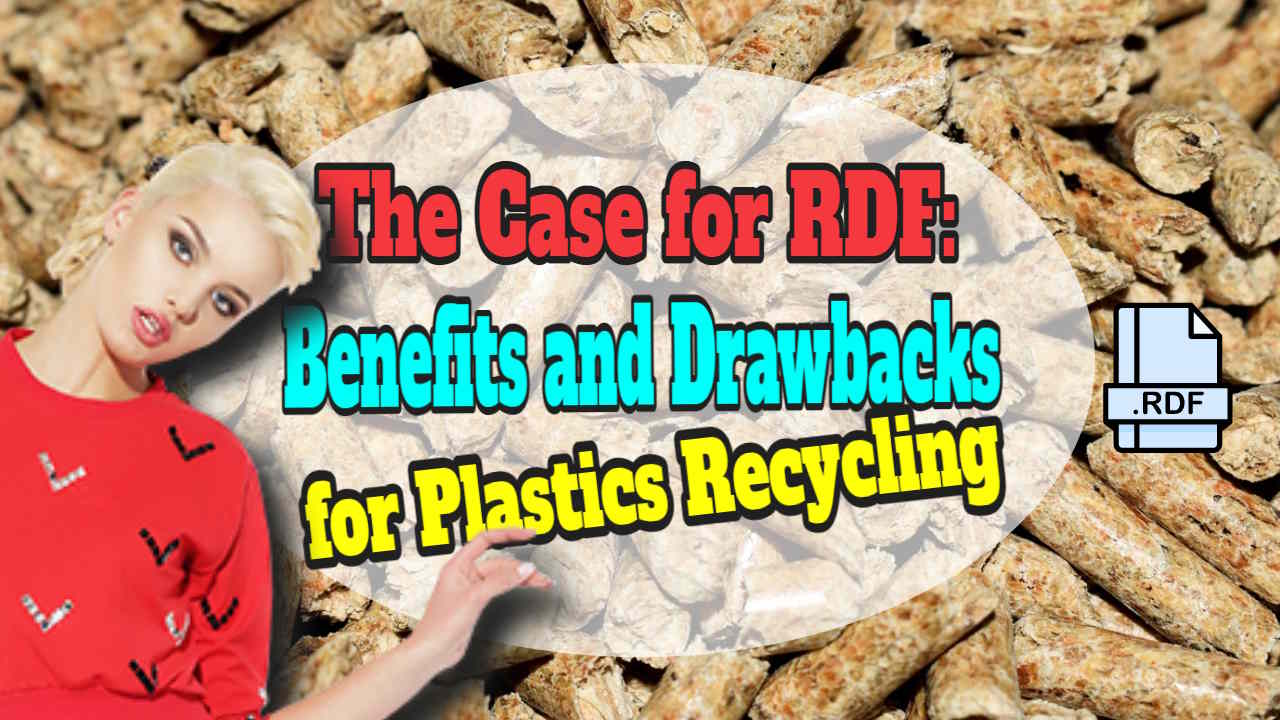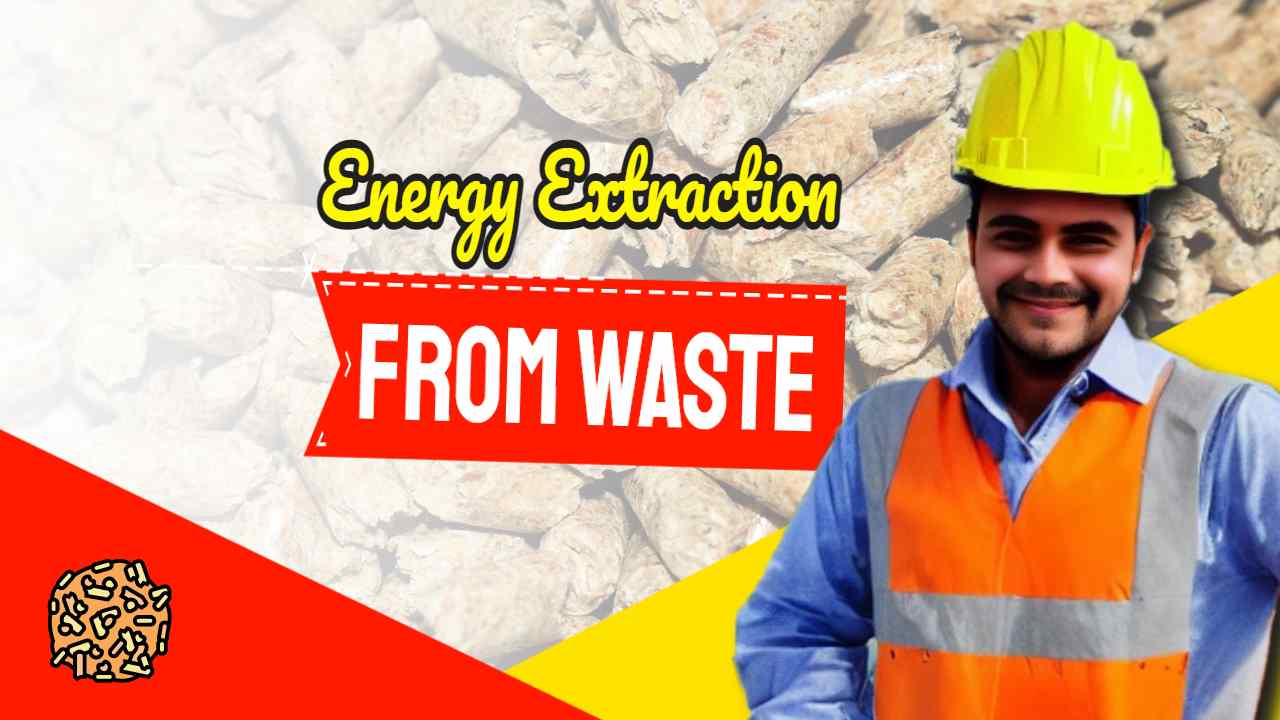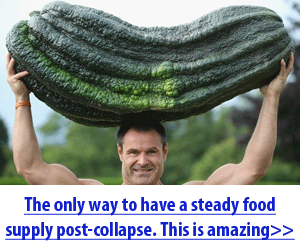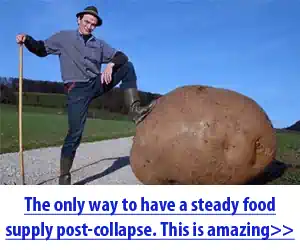
The Case for RDF: Benefits and Drawbacks for Plastics Recycling
As society becomes increasingly aware of the environmental impact of waste, the waste hierarchy has become a useful tool for managing waste sustainably. The waste hierarchy lists the various methods for processing municipal and commercial waste in order of preference and this includes separation and depackaging. At the top of the hierarchy is prevention, followed by reuse, recycling, energy recovery, and lastly, disposal. One method of waste treatment that falls under the category of energy recovery is Refuse Derived Fuel (RDF). RDF is a useful fuel for incinerators, but a lot of the heat it produces during combustion comes from the plastic in it. Now few would dispute that it is essential to recycle plastic far more than in the past to avoid it entering the environment, and the recycled plastic resin has a far higher monetary value than the plastic in RDF. Many people hope that plastic recycling will one day reach the same high percentage rates as for metal cans which can be as high as 90% or more. The result of such a high recycling rate is that metal can production require very little additional metal to be imned each year, and the same is hoped for with plastic in
read more →
The Refuse Derived Fuel Process
The Refuse Derived Fuel Process is a waste-to-energy process that diverts municipal solid waste from landfills and generates a revenue stream for waste processors. It also helps reduce greenhouse gas emissions. The process involves several stages of waste processing before the combustible fraction is shaped into pellets and sold as fuel. Depending on the fuel requirements, additional processing equipment is used. Primary Separation The Refuse Derived Fuel Process is an alternative way to dispose of solid waste. This process converts municipal waste into a combustible material called RDF, which can be used for energy generation and as a source of recyclable materials. RDF can be manufactured from a variety of materials, including municipal solid waste (MSW), industrial waste and commercial waste. The waste is sorted into high calorific fractions that can be burned in cement kilns as alternative fuels. Primary separation is one of the major steps involved in the production of RDF from MSW. It involves separating the waste into Bio-degradable, Glass, Rags, Paper, Plastic, Leather and Rubber, Metals and other domestic hazardous and Inert particles. It also includes a number of preliminary processes such as size screening, shredding and pelletizing. These processes
read more →
Why We Must Stop Wasting the Food It Costs So Much to Make
We waste one-third of all food produced, enough to feed two billion people twice over. That’s a huge problem, not only for food security, but also for the planet. Food waste is a growing issue in today's world, with one-third of all food produced globally estimated to go to waste. This waste has serious economic, environmental, and social consequences, including the waste of valuable resources, the contribution to climate change, and the starvation of millions of people. From the resources required to grow and harvest crops to the energy used in processing and transportation, the cost of producing food is high. Despite this, a shocking amount of food is wasted every day, both in the home and in the commercial sector. To make matters worse, food waste produces a huge amount of greenhouse gases, including methane, which contributes to climate change. This article will look at why we should stop wasting food and the benefits of doing so. There are numerous compelling reasons to take action to reduce food waste, ranging from reducing our environmental impact to addressing food insecurity. 1. Save Money When you throw out food that isn’t good enough, it costs you
read more →
Food Waste Depackaging Machines for Pulp Energy Extraction
On This Page: Food Waste Depackaging Machine Plastic Bottle Depackaging Machine T42 food waste depackaging system Kerbside waste (organic house hold) Restaurant & hotel waste Industrial & commercial organic waste Processing 10 tons of food waste per hour Packaged food waste - no problem Unpacking our food waste depackaging technology food waste depackaging equipment Food Waste Depackaging & Recycling De-Packaging Waste to Recycle More A food waste depackager can use multiple characteristics and switches to produce a high quality pulp output and a reject stream of everything else. For example, tensile/compressive strength is the code and applied force renders it open as the switch. Hardness, or resistance to force, can be a code, and pressure as a switch opens packages of sso to separate out the packaging. The switches employed by the machines in the market today are variations on applied force, either in a tangential shearing action, a vertically-oriented hammering action, horizontal or vertical pressure through a metal sieve or screen, or some combination thereof. A good food waste depackaging system converts waste into biogas and other sustainable fuels
read more →

Energy Extraction From Waste
Energy extraction from waste is one of the most promising renewable energy sources. It helps to reduce pollution caused by the dumping of waste in landfills. In addition, it is a viable alternative to fossil fuels. Depending on the process used, energy can be produced for a wide range of applications. These include electricity and thermal. Waste to energy (WTE) is a process that converts waste chemicals and other non-recyclable solid waste into energy, either for electrical or thermal use. WTE aims to minimize the amount of waste that goes into landfills by producing valuable heat and other forms of energy from the waste. This form of technology is a natural development of the push for clean solid waste management. Waste to energy plants can be used to produce electricity, thermal power, and methane gas. This form of energy can also be utilized as a source of secondary fuel resources. The total amount of biodegradable waste that can be processed depends on the capacity of the plant. A waste to energy plant can be efficient at using degradable organic waste or the biodegradable portion of municipal solid waste. A number of methods for converting waste
read more →

Disadvantages of Refuse Derived Fuel (RDF)
A lot of people may have heard about the advantages of recycling refuse energy by burning Refuse Derived Fuel (RDF), but there are also some major disadvantages. These are discussed below. Waste-to-energy Waste-to-energy (WtE) from the conbustion of Refuse Derived Fuel (RDF) is a form of energy recovery in which waste is converted into heat or electricity. In the United States and globally, the most common form is incineration . By using incineration, a waste-to-energy plant some sources say that they can transform one ton of municipal solid waste into 550 kilowatt hours of electricity. Waste-to-energy produces pollutants However, waste-to-energy produces pollutants that must be removed (scrubbed) from the flu gases. These include acid gasses, nitrogen oxide, and particulate matter. These pollutants can contaminate groundwater and soil. They can also damage vegetation. Waste-to-energy can disincentivize more sustainable practices Furthermore, waste-to-energy can disincentivize more sustainable practices, such as recycling. As a result, waste-to-energy is not as effective as its proponents would like it to be. Another issue is that waste-to-energy plants emit air pollutants at higher rates than coal-fired power plants. The particles released from incineration plants, unless very carefully controlled, can cause
read more →
What are RDF and SRF?
If you are looking for a waste disposal solution, or a cheap fuel you may be asking yourself, "What are RDF (Refuse Derived Fuel) and SRF (Solid Recovered Fuel)?". These are two types of waste derived fuel (WDF) that are used in various ways, but in almost all applications you won't want to use them. Theoretically you can use them to power your home or business, as a source of energy, or as a substitute for natural gas. But, RDF is still considered waste for the purposes of the law (unless the stringent End of Waste Criteria can be met), and users of the fuel are required to comply with the IED, which has superseded the WID. End of Waste Criteria (EoW) defines the point at which certain wastes stop being considered waste and acquire the status of a product (or a secondary raw material). RDF Remains a Waste and it's Use as a Fuel is Strictly Controlled According to Article 6(1) and (2) of the Waste Framework Directive 2008/98/EC, certain specified waste ceases to be waste once it has undergone a recovery (including recycling) operation and satisfies certain requirements to be defined in accordance with certain
read more →
Refuse Derived Fuel Facts and Future Prospects
Refuse-derived fuel (RDF) is a type of fuel derived from municipal solid waste (MSW) or industrial waste. The idea of using waste to generate energy is not a new concept, but refuse-derived fuel (RDF) has had a more recent resurgence in popularity due to its potential to reduce the amount of waste sent to landfills. But let's face it RDF is always hampered by its inability to produce energy in a clean and efficient manner. RDF is created through a process of sorting, shredding, and pelletizing waste materials such as plastics, paper, and rubber. The resulting product is then pelletised with luck sold and burned in a combustion chamber to generate energy, typically in the form of heat or electricity. On paper, RDF appears to be a great solution for reducing waste, producing energy, and helping to fight climate change. However, in recent years there have been a number of issues that have caused RDF to face significant criticism. One of the most prominent issues surrounding RDF is the potential health risks associated with its use. When burned, RDF produces a variety of dangerous pollutants, including particulate matter, nitrogen oxides, and dioxins. These pollutants can cause a
read more →


